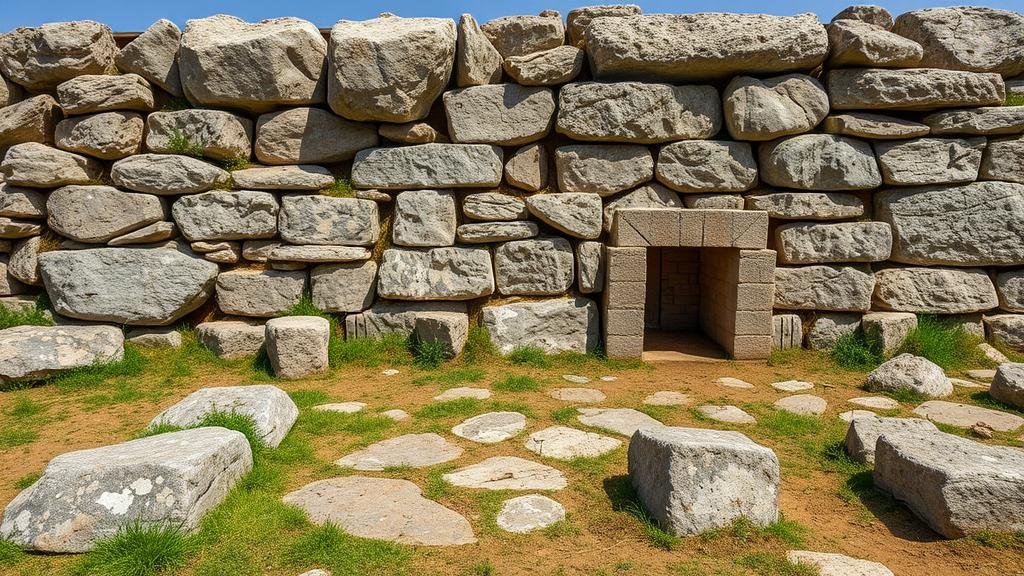Tracing Lost Stone Masonry Sites for Construction Tool Discoveries
Tracing Lost Stone Masonry Sites for Construction Tool Discoveries
The exploration and documentation of lost stone masonry sites is crucial for understanding historical construction methods and the tools used in these processes. This article delves into the techniques employed by researchers to trace these sites, the significance of their findings, and the implications for contemporary tool development and heritage conservation.
Introduction
Stone masonry has been a fundamental aspect of architectural practice across diverse cultures and civilizations. The study of historical sites provides invaluable insight into past construction techniques and the tools utilized. This research focuses on tracing lost stone masonry sites, particularly in regions like Europe and North Africa, where such methods were prominently used. The findings not only shed light on ancient masonry practices but also facilitate the rediscovery of construction tools relevant to modern architects and builders.
Historical Context of Stone Masonry
Stone masonry dates back thousands of years, with evidence found in structures like the Great Pyramid of Giza (circa 2580-2560 BC) and the Roman Colosseum (AD 72-80). The craft not only reflects the artistic capabilities of the time but also serves practical needs, employing available resources such as limestone, granite, and marble.
- The pyramids in Egypt exemplify early monumental architecture, showcasing precise stone cutting and placement skills.
- Roman architectural advancements utilized concrete and stone, evidenced in structures like aqueducts and temples, demonstrating the integration of stone masonry in engineering.
Methodologies for Tracing Lost Sites
Researchers employ various methodologies to locate and analyze lost stone masonry sites. e include historical texts, archaeological surveys, aerial photography, and geospatial technology.
- Historical Documentation: Ancient texts and travel logs often provide hints about the location of significant masonry works. For example, the writings of Pliny the Elder reference quarries and structures in ancient Rome.
- Archaeological Surveys: Systematic field surveys can uncover remnants of past masonry through excavation and analysis of construction materials.
- Aerial Photography and Satellite Imaging: Modern technology allows researchers to detect earthworks and stone outlines not visible from the ground.
- Geospatial Analysis: GIS (Geographic Information Systems) help in mapping historical sites based on collected data, enhancing spatial understanding.
Real-World Applications of Tool Discoveries
The rediscovery of lost sites often leads to the uncovering of ancient tools used in stone masonry, which can inform modern construction practices. For example, a study conducted in 2021 at the site of an ancient Roman quarry in Carrara, Italy, revealed unique chiseling techniques and tools that can be adapted for contemporary stoneworking.
Plus, the documentation of these tools enriches historical repositories, offering insights into the evolution of construction technology. An example includes the discovery of a specific type of hammer used in ancient Greece that resembles todays masonry hammers, indicating a continuity in tool design over centuries.
Challenges and Considerations
While tracing lost stone masonry sites and uncovering tools presents significant benefits, researchers face various challenges. These include issues related to the preservation of sites, legal restrictions on excavation, and the potential for destruction due to urban development.
- Preservation: Many sites are at risk of deterioration. Effective heritage management practices must be implemented to ensure their protection.
- Legal and Ethical Concerns: Excavations may be subject to strict regulations that vary by country, necessitating a cautious approach.
- Urban Development: Increased construction in historically rich areas often leads to the loss of potential archaeological sites.
Conclusion
Tracing lost stone masonry sites is not just an archaeological endeavor; it is a vital process that connects modern techniques to historical practices. As researchers continue to utilize innovative methodologies, the construction industry can benefit from the findings regarding tools and masonry techniques of the past. This holistic approach enables the preservation of cultural heritage while integrating valuable lessons into contemporary practices.
For future exploration, interdisciplinary collaborations between archaeologists, architects, and engineers are essential. By fostering a dialogue between these fields, advancements in historical awareness and tool applicability can be achieved, ensuring that the legacy of stone masonry endures.
Ultimately, the study of these lost sites and the tools therein serves as a testament to human ingenuity and resilience, reminding us of the built environments that have shaped civilizations throughout history.



